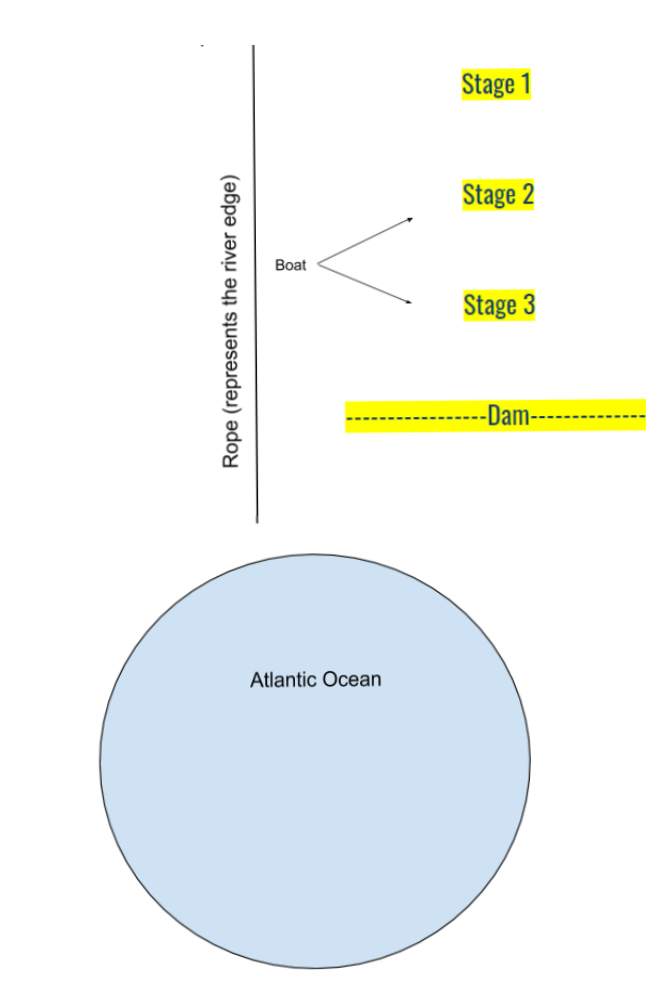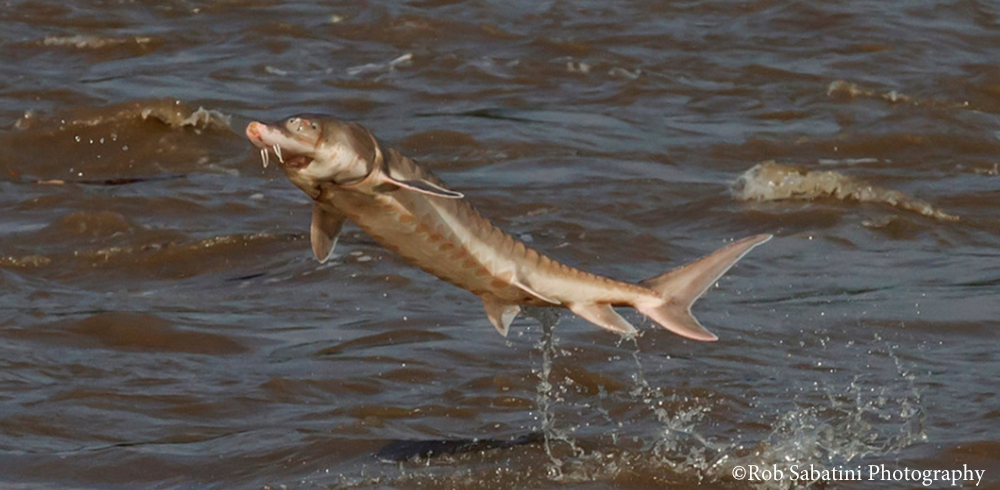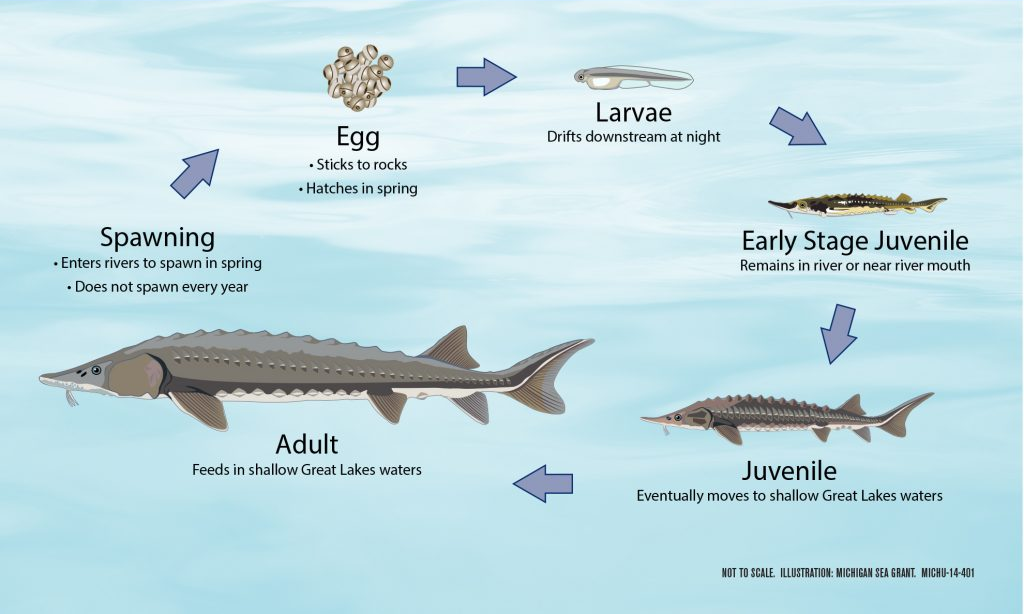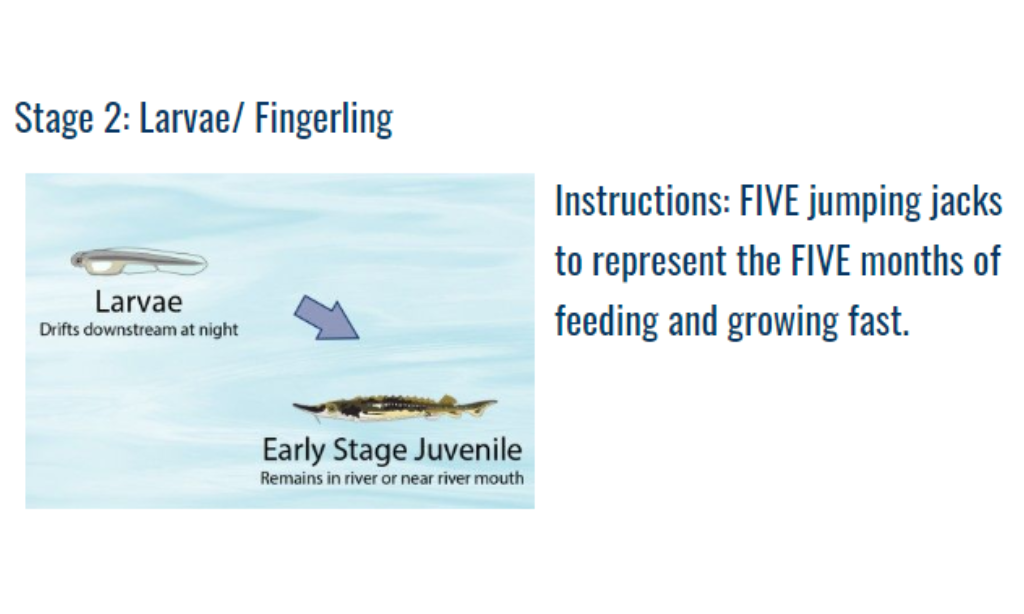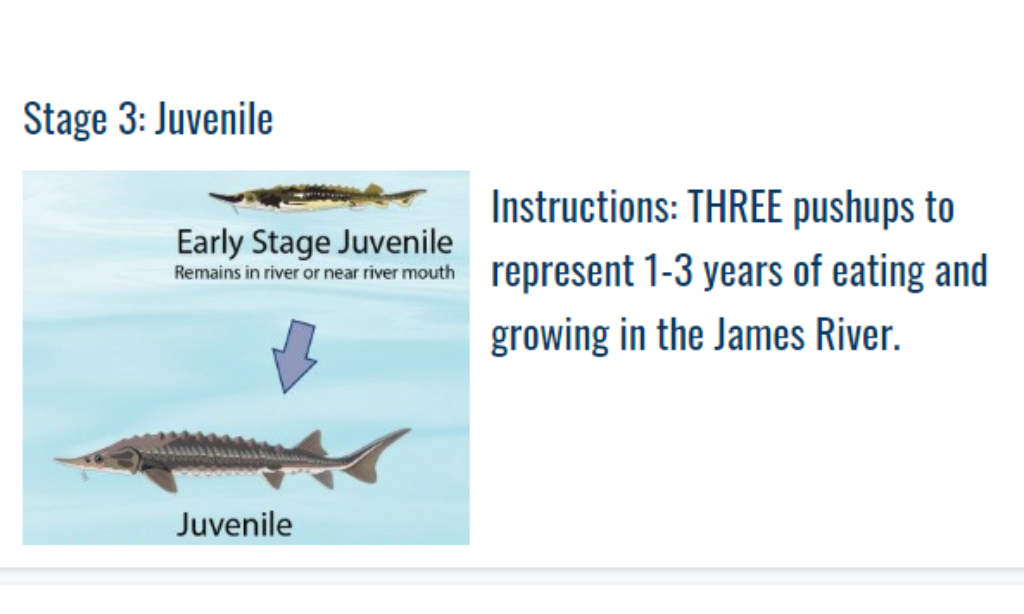The Atlantic sturgeon has a long history and great importance to the James River. It is important to connect students to their environment so they develop a passion for protecting wildlife.
Key takeaways from the video:
- Why are Atlantic Sturgeon endangered (2:36-3:05)?
- How are researchers bringing back the species(4:40 and 7:44)?
Sturgeon Life Cycle
Review the Atlantic Sturgeon life cycle handout or above images. Sturgeon start off as eggs that are laid in a freshwater river. They hatch and become larvae. This is a dangerous stage because they are susceptible to being eaten by predators. Sturgeon can be in their juvenile stage for up to 6 years. During this time, they remain in freshwater rivers. Once adults, sturgeon make their way out to the bay and then into the ocean. At around age 16-20 years old, sturgeon are mature enough to swim back to the river and spawn.
Sturgeon Life Cycle Game
After thoroughly reviewing the sturgeon life cycle handout or above information, it is time to set up the life cycle game! It is prefered to play the game outside with plenty of space to run around, but if you are limited to the indoors, adjust the course to fit your area. The final page of this packet demonstrates how to set up the obstacle course. Print and cut out the three stage labels, and lay them next to your station markers to designate each stage.
- Explain to the students that they are pretending they are living the life of an Atlantic Sturgeon. Their goal is to make it through several cycles of the course without getting killed.
- The students will start at the beginning where there will be a task card. Each stage has a physical task for the students to complete before they can move on to the next stage.
- While the students are running between stage 2 and stage 3, there is an option to have a student/ parent there pretending to be a boat. The ‘boat’ can tag the sturgeon as they are running to stage 3. Sturgeon often get killed by boat strikes while moving up and down the James River. The ‘boat’ can only strike the sturgeon when they are moving from stage 2 to 3. If a sturgeon gets struck, they must return to stage 1 and start over.
- After stage 3, there is an option to add a bench/ obstacle to act as a dam. Dams block the path of migration for anadromous fish. The sturgeon must find a way to go over or under the ‘dam’.
- When the sturgeon makes it past the dam, they must run out into an open area and wait 15 seconds (representing 15 years until adulthood) before they can return to the river to spawn. When they return, they must make it past the dam and run to stage 1 without getting tagged by the ‘boat’.
- The sturgeon can repeat this yearly migration as often as they would like.
